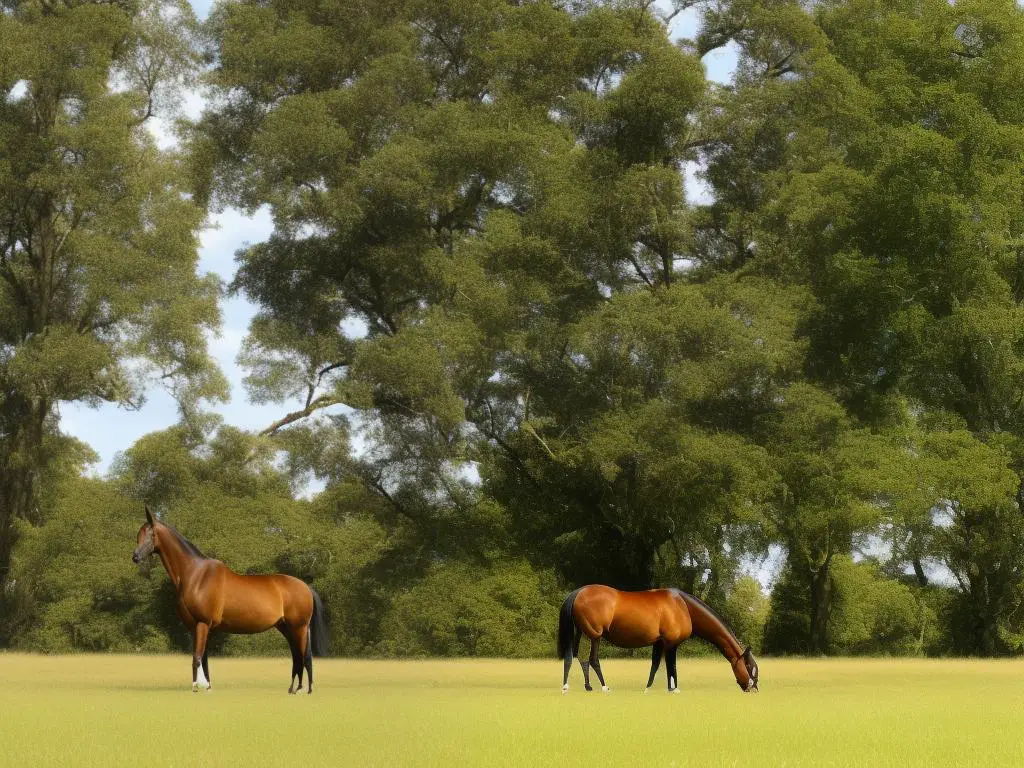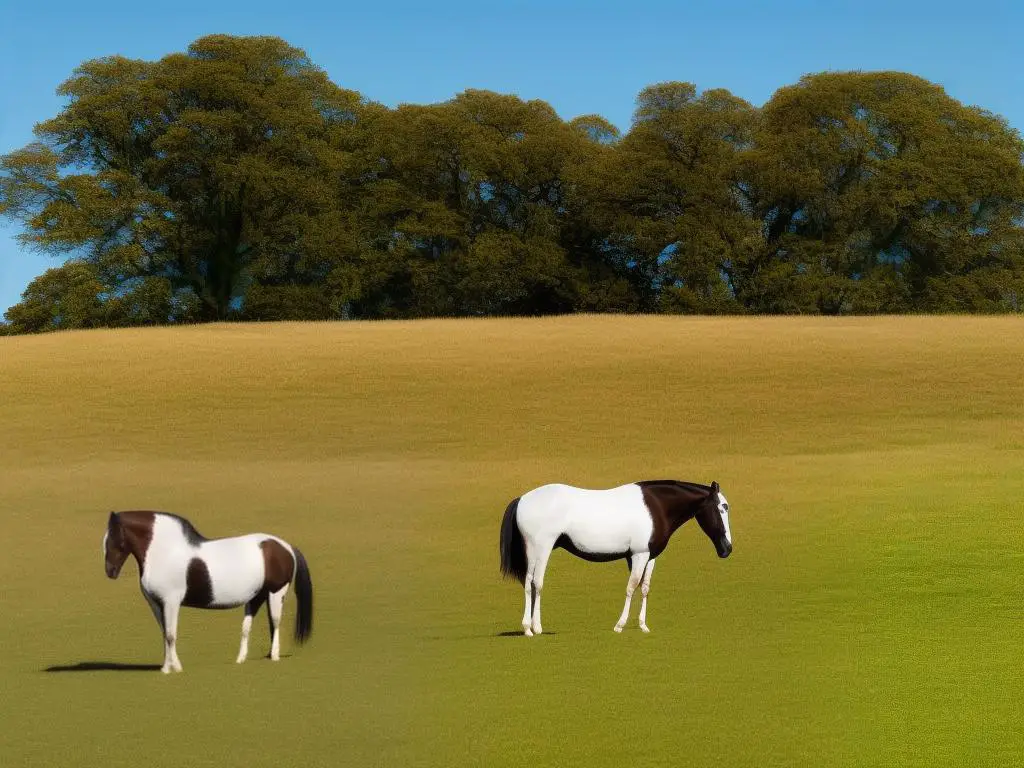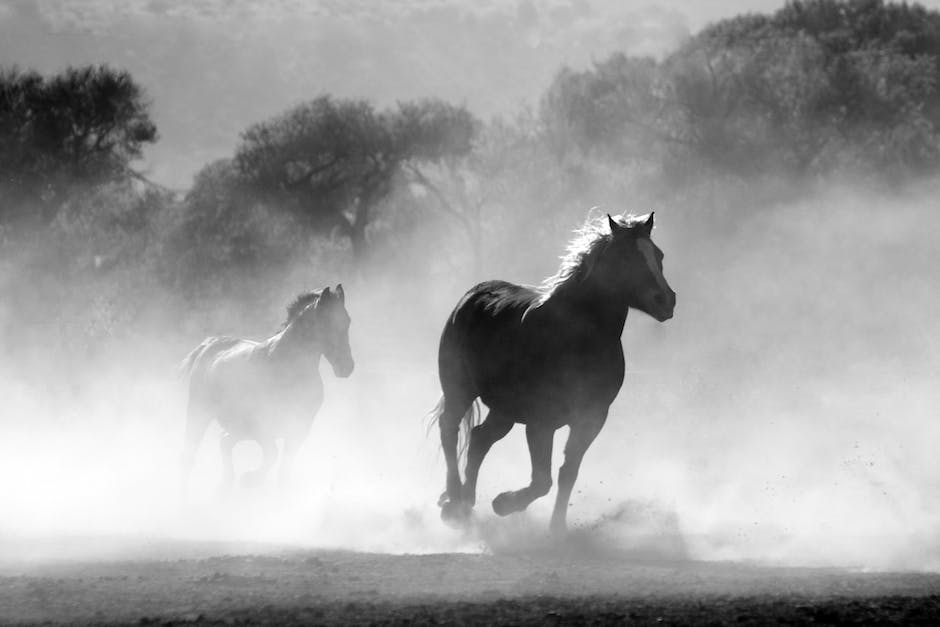At the heart of the equestrian world lies the majestic Oldenburg horse breed, a creature of immense prowess, beauty, and athleticism. Originating from the ancient terrains of Oldenburg, Germany, this breed encompasses an enchanting history spanning centuries, as well as a unique combination of physical attributes and temperaments. Admired for its superior athleticism and capabilities in dressage and jumping, an Oldenburg is instantly recognizable in a herd. Through this discourse, we delve into the intricacies of its historical roots, its distinctive demeanor, and physique, as well as the vital components related to their care and preservation.
Table of Contents (Horspedia)
History of the Oldenburg Breed
The Oldenburg Horse Breed
The Oldenburg horse breed traces its origins back to the northernmost tip of Lower Saxony, a state in northwestern Germany. This area, named after the city of Oldenburg, thrived as a prominent breeding district for centuries under the control of the Grand Duchy of Oldenburg. Highly recognized for its fertile soil, the region was an ideal location for horse breeding, becoming the birthplace of these magnificent animals known today as the Oldenburgs.
Evolution over the Centuries
By the 18th century, stallions from England and the Netherlands were added to the genetic pool. These horses were known for their strength and speed, making them favored among breeders of war and carriage horses. The introduction of these breeds allowed the Oldenburg horse to evolve into a larger, more robust breed, known for its power and endurance.
Over the years and especially during the 19th century, the breed’s characteristics continued to change. They began to resemble the modern Oldenburg we know today: a refined and elegant animal, primarily used for riding and carriage. It was in the second half of the 19th century that Oldenburg breeders started to focus on developing the breed’s responsiveness, athleticism, and grace, attributes that now define the Oldenburg horse.
The 20th Century Transition
The Oldenburg horse underwent a dramatic transformation in the 20th century. The changing trends and needs of the people led to a shift from breeding robust carriage horses to producing sport horses suitable for dressage, jumping, and eventing. After World War 2, mechanization reduced the requirement of horses for agricultural and transportation purposes. This led the breeders to adopt a new breeding goal, transforming the Oldenburg breed for modern equestrian sports. Breeding was focused on Thoroughbreds, Hanoverian, Holsteiner, and Trakehner horses to create a more athletic and versatile horse.
Oldenburg Horse in the Modern World
Presently, the Oldenburg horse breed has progressed to become one of the most distinguished in the equine world. It is suited for dressage, show jumping, and eventing, excelling in all levels of competition. It owes its success to the Oldenburg International Breeding Program, which fosters the development and promotion of the breed’s performance in international and competitive sports.
A vital aspect of understanding the significance of the Oldenburg breed is recognizing its global contribution to horse breeding. Oldenburg horses have been exported worldwide and have significantly influenced and enriched global horse breeding, producing top-quality sport horses internationally.
An Overview of the Versatile and Strong Oldenburg Horse Breed
Bred over centuries, the Oldenburg horse breed has earned worldwide recognition for its incredible versatility, impressive strength, and captivating elegance. Initially celebrated as an excellent carriage horse, the Oldenburg has undergone meticulous and purposeful breeding to emerge as a supreme sport horse. The shifting needs of horse enthusiasts have been met by this breed’s remarkable adaptability, cementing its place within global horse communities. The grace, athleticism, and unrivaled temperament that this breed possesses make it truly cherished today.

Characteristic Features & Temperament
Warmblooded Oldenburg Horses – Exceptional Athletic Proficiency
Tracing back its lineage to the 1600s, Oldenburg horses represent an exemplary warmblood breed admired for its superior size, power and athletic prowess. Drawing parallels with other warmblood breeds, they inherit the dynamic fusion of Thoroughbred speed and draft horse strength. Complementing these attributes, the breed further exhibits a calm demeanour, demonstrating the perfect equilibrium of versatility and temperament.
Physical Attributes
One of the key recognizable features of an Oldenburg horse breed is its height. Typically, an Oldenburg horse measures on average about 16.2 to 17.2 hands high, making them one of the larger horse breeds. However, it’s not uncommon to find some that are taller. This height range makes them ideal for sports that require a large, powerful horse. Along with their size, these horses carry a strong bone structure and have well-defined muscles.
The Oldenburg horse breed has a well-proportioned body with broad, strong loins, a deep chest, and powerful hindquarters which contribute greatly to their strength and speed. They have a slightly broad forehead with expressive eyes and well-shaped ears. The neck is of medium length, stronger and carrying the head high. The legs are well-muscled, straight with hard hooves. All these features combined give them a smart and elegant appearance.
In terms of color, Oldenburg horses come in a variety of colors, with the most common ones being bay, black, gray, and chestnut. However, they may also be white or roan. Each of them can demonstrate different amounts of white markings on their body.
Temperament and Behavior
Oldenburg horses are loved for their excellent temperament as much as they are for their height and strength. These horses are known for their keen intelligence, trainability, and willingness to work. They are very gentle and show a high level of patience, even with inexperienced or young riders.
They have a calm nature and are not excitable or spooky, making them a popular choice for beginner riders. However, they also have a great work drive, combined with a high-level of rider responsiveness. This makes them suitable for experienced riders seeking a horse for competitive riding.
Athletic Abilities
Oldenburg horses have exceptional athletic abilities, making them popular among riders for a variety of equestrian activities. Due to their sizable height and powerful build, they are suitable for dressage and jumping. They exhibit excellent gaits with great rhythm, making them particularly suited for the high precision and discipline in dressage.
Additionally, their calm and willing nature, combined with strong legs and good jumping ability, makes them popular in show jumping and eventing. They are also used in driving sports because of their strong pulling power.
Overview
The Oldenburg breed of horse stands out due to its notable physical characteristics, including significant height and a vast array of color variations, as well as its excellent conformation. This breed’s demeanor is both calm and eager to please, contributing to an ideal temperament that is favored amongst horse enthusiasts. It’s worth noting the Oldenburg’s athletic versatility and high performance capability in various equestrian disciplines, further enhancing its attractiveness and versatility among riders.

Care & Maintenance for Oldenburg Horses
Nutritional Needs of the Oldenburg Horse
Oldenburg horses have specific nutritional needs that must be met to ensure their health and performance. They primarily consume high-quality hay and fresh grass, but may also require additional grains and concentrates to meet their caloric and nutritional needs, particularly given their active lifestyles. Essential vitamins and minerals, such as selenium and vitamin E, are typically included in their diets through supplemental feedings. Known for their robust appetite, Oldenburg horses also need abundant fresh, clean water – typically consuming between 5 and 10 gallons daily.
Common Health Issues in Oldenburg Horses
As with any breed, Oldenburg horses are prone to certain health problems. Laminitis, colic, arthritis, and respiratory issues are some common conditions faced by them. Laminitis, a condition that affects the horse’s hooves, can be a result of overfeeding or an imbalance in their diet. Colic, a digestive disorder, can be caused by numerous issues from parasites to stress. Regular veterinary exams and preventive care are crucial in nipping such issues in the bud and ensuring the horse’s long-term health.
Overall Care and Maintenance for Oldenburg Horses
Care and maintenance practices can greatly affect the lifespan and quality of life of your Oldenburg horse. Along with providing a balanced diet, they require regular exercise to maintain muscle tone, cardiovascular health, and overall wellbeing. Whether they are used for dressage, jumping, or simply as riding horses, physical exercise should be a part of their everyday routine.
Special Grooming Techniques for Oldenburg Horses
Oldenburg horses have lush coats which require regular grooming. This not only keeps them looking their best, but also stimulates blood flow, removes dirt and loose hair, and checks for skin infections or parasites. Special grooming techniques may include body brushing, mane and tail combing, hoof picking, and regular baths. Moreover, their hooves require trimming by a professional farrier every six to eight weeks to prevent foot problems.
Housing and Exercise Suggestions
The housing needs of Oldenburg horses are pretty typical for most breeds. These horses would do well in spacious pastures where they can graze and roam freely. A solid, dry shelter is important too, for protection against weather extremes. As they are social creatures, they enjoy the company of other horses. Therefore, housing them in pairs, or in a herd, can contribute to their healthy emotional state.
Exercise is equally important. Regular riding, lunging, and playtime in the paddock are good ways to keep an Oldenburg in shape. Depending on the horse’s profession (i.e., dressage, eventing, show jumping), specific training and exercise regimes may be introduced.
General Care for Oldenburg Horses
The well-being and vitality of an Oldenburg horse largely depend on a comprehensive and balanced approach to its care. This includes thoughtful provisions for diet, health assessment, grooming, living conditions, exercise routines, and psychological health. Given their kind nature and flexibility, Oldenburg horses make an excellent companion when managed properly, thereby emphasizing the necessity to understand their care needs and preferences thoroughly.

Cultural Impact & Use of Oldenburg Horses
Introduction to the Breed
The Oldenburg horse breed, one of the most ancient warmblood breeds, originates from the Oldenburg region in Northwestern Germany. They have been known for their imposing strength, exquisite elegance, and operational versatility, leading them to influence a variety of cultures and societies across history. While they were initially bred for tasks such as carriage pulling and farm work centuries ago, Oldenburg horses now enjoy a notable presence in competitive equestrian sports, breeding programs, and international shows.
Cultural Impact
Originally bred by Count Johann XVI of Oldenburg in the 17th century, Oldenburg horses are revered for their hardiness, agility, and size. Their superior attributes made them ideal for various roles, influencing European cultures significantly. They were initially utilized as war horses due to their strength and size. However, they soon became symbols of status and wealth as they were perfect for carrying heavy carriages and performing farm work effectively.
In German and Dutch cultures, Oldenburg horses have a storied tradition. They were often featured in folklores and narratives that highlighted their strength, reliability, and nobility. Their image was often utilized to represent power, freedom, and wealth, further ingraining their cultural significance. Today, they continue to hold a revered place in these European societies, often featured in parades, celebrations, and traditional festivals.
Use In The Modern World
Even today, Oldenburg horses play an essential role across various sectors. Their athletic capabilities and versatile skill set make them a popular choice in many equestrian sports, including dressage, show jumping, and eventing. Their exceptional performance in these sports has seen their demand soar among competitors wanting a competitive edge. Many acclaimed riders, like Heike Kemmer and Victoria Max-Theurer, have banked on Oldenburg horses’ talents to clinch victories in prestigious equestrian competitions.
Apart from their presence in sports, Oldenburg horses have an esteemed place in breeding. Known for their excellent conformation, higher intelligence, and robust health, they are chosen as foundation stock to enhance other horse breeds. Their genetic diversity also contributes to the improvement of equine health and performance traits. Breeders and ranchers everywhere prize them for these characteristics.
Oldenburg Horses As Show Animals
Oldenburg horses have a flair for presentation, making them a popular choice for horse-show competitions. They possess an effortless grace, exceptional gaits, and a commanding presence that makes them stand out. Their beauty and elegance, coupled with their intelligence and trainable nature, make them perfect for showbiz and entertainment. From performing intricate moves in dressage rings to demonstrating jumping prowess in show jumping events, these horses have become a spectacle that never fails to captivate audiences.
Over time, Oldenburg horses have attained a high profile in the equine show world. Many of these horses have come to embody the quintessential performance horse, making them prized actors in horse shows worldwide. Their impact in this sphere has only served to grow their fame and popularity among horse enthusiasts.
In Conclusion
Due to their performance in sports, value in breeding, and showmanship, Oldenburg horses have made a significant impact on various cultures and societies. Whether as a symbol of power and prestige or as competitors in equine sports, their influence continues to be felt today. As we look ahead, it is clear that the value and prominence of Oldenburg horses have never been higher. Whatever role they are given, their performance and flair continue to impress, ensuring that their cultural significance and practical use remain integral parts of the equine world.

Across every breed, at every corner of the world and in every equestrian event, the legacy of the Oldenburg breed is felt. Be it their remarkable feats in show rings, their robust dynamics in equestrian sports, or their significant influence in the sphere of horse breeding; Oldenburg horses continue to make significant contributions. These charming creatures have not just carved a niche for themselves but are symbols of excellence and elegance in equine history. As we continue to admire their prowess, let’s also remember to ensure their well-being and longevity. With understanding and proper care, these horses are bound to continue their historic success and leave a lasting impact in the hearts of horse lovers worldwide.
